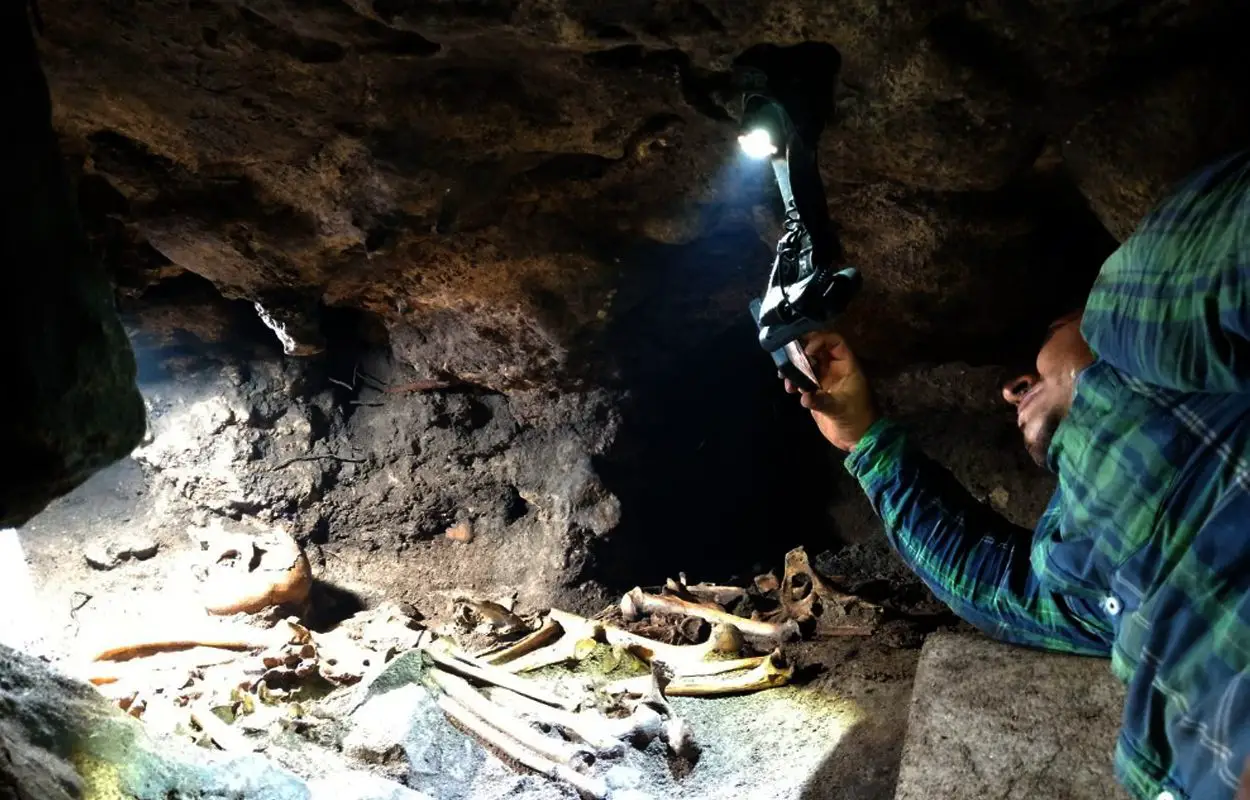Archaeologists from the National Institute of Anthropology and History (INAH) have discovered a mortuary deposit in a cave at the Maya city of Tulum.
Tulum is a Maya walled city which served as a major port for Coba, in the Mexican state of Quintana Roo. The city was one of the last cities built and inhabited by the Maya before the Spanish conquest, which continued to be occupied until the 16th century.
Tulum was first mentioned by Juan Díaz, a member of Juan de Grijalva’s Spanish expedition of 1518. The first detailed description of the ruins was published by John Lloyd Stephens and Frederick Catherwood in the book “Incidents of Travel in Yucatan”, written in 1843.
A recent study within the walled area between buildings 21 (Temple of the Columns) and 25 (Temple of Halach Uinic) has revealed a cave which was sealed off with a large boulder.

Upon removing the boulder, the researchers found human remains which were split in two by the boulder, leaving the lower part of the body on the outside and the upper part inside the cave.
As the exploration of the cave continued, it was identified that the interior contains two small chambers—one situated in the southern section and another in the northern section—each measuring no more than 3 metres in length by 2 metres in width, with an average height of 50 centimetres.
A total of eight burials, primarily adults, have been documented within these chambers, which have been found in a high state of preservation owing to the favourable environmental conditions within the space.
Likewise, a large number of skeletal remains of animals associated with the burials were recorded, including: various mammals (domestic dog, mouse, opossum, blood-sucking bat, white-tailed deer, tepezcuintle, armadillo nine banded, tapir, peccary); birds of the order Galliforme, Passeriforme, Pelecaniforme, Piciforme and Charadriiforme; reptiles (loggerhead sea turtle, land turtle and iguana); fish (tiger shark, barracuda, grouper, drum fish, puffer fish, eagle ray); crustaceans (crab and cirripedians), mollusks (snail) and amphibians (frog).
While numerous ceramic fragments typical of the Late Postclassic period (AD 1200-1550) have been discovered alongside these burials, only three individuals can be specifically connected to a small Papacal Inciso type molcajete, featuring hollow semiglobular supports.
The restoration of this ceramic piece has been conducted by Carolina Segura Carrillo, a restoration specialist affiliated with the conservation team at Promeza in Tulum, overseen by restorer Patricia Meehan Hermanson.
Header Image Credit : Jerónimo Aviles Olguin





